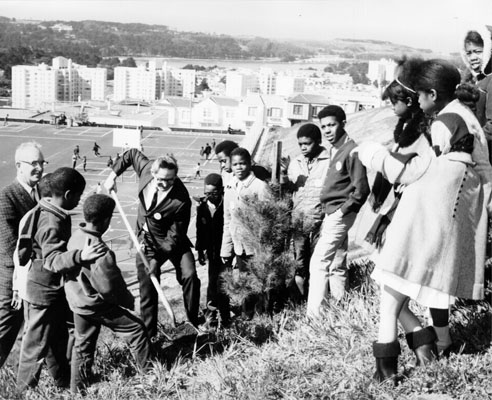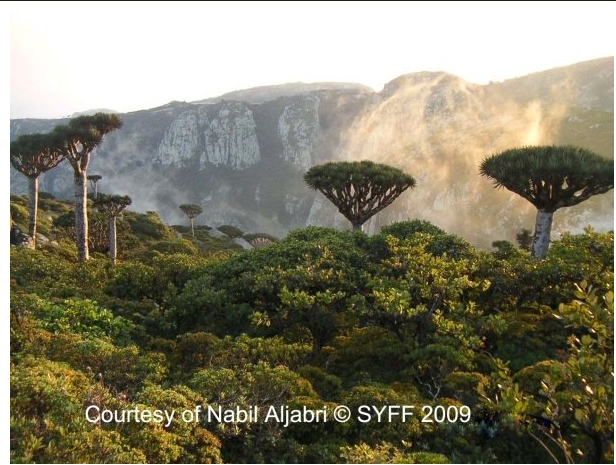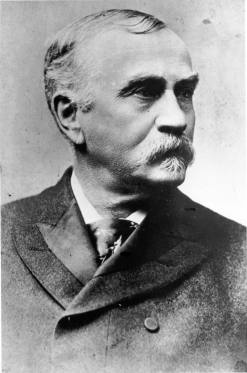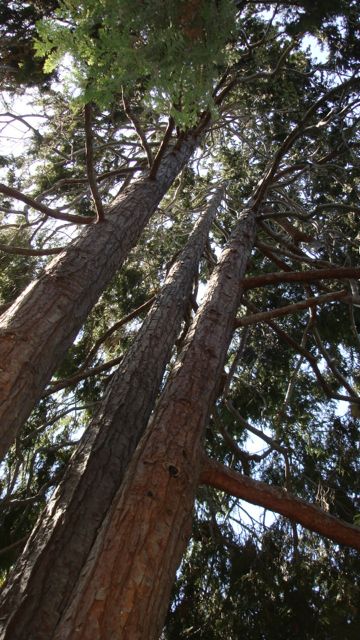National Arbor Day is April 24, 2020. To honor this holiday, Ellyn Shea takes us through the unexpected history of this event, and points out that the way we celebrate Arbor Day may have more to do with what’s best for politics than with what’s best for trees. – DeepRoot
The first Arbor Day in the world was reportedly in 1805 in Villanueva de la Sierra, a small Spanish village near the border of Portugal. A local priest organized a tree planting after mass on Carnival Tuesday (a form of Mardi Gras?). The first tree (of many) planted was a poplar. Afterwards, there was feasting and dancing for three days. Sounds like my kind of Arbor Day!
In January of 1872, J. Sterling Morton proposed to the State Board of Agriculture: “That…the 10th day of April, 1872…is hereby especially set apart and consecrated for tree planting in the State of Nebraska, and the State Board of Agriculture hereby name it ‘Arbor Day.’” The resolution passed unanimously, and more than one million trees were planted on that year’s Arbor Day.
Nebraska at that time had very few trees, and the western part of the state had poor soil and very low rainfall – less than 20 inches per year. In the 1860s and 70s, a popular theory held forth that planting trees would increase rainfall. Although this was debunked around the turn of the century, tree planting had caught on in the popular imagination. After decades of wasteful forestry practices in America, tree resources had noticeably declined, and a new mindset of conservation began to take hold in the late 19th century.
Iowa was the second state to adopt Arbor Day, and by the 1880s nearly every state was celebrating it in some form. Other nations soon followed suit. Nebraska’s Arbor Day was eventually changed to April 22nd, Morton’s birthday*.

Students from Jose Ortega School (San Francisco) planting a tree, 1969. Courtesy of the San Francisco Public Library
The first US Arbor Day was in the spring because that was a natural time to plant in that part of the world. New trees need water to get established, so timing of planting is crucial to survival. According to the National Arbor Day Foundation, “individual states observe Arbor Day “according to their best tree-planting times.” Maine and Alaska have it in May, Louisiana and Florida in January. Living where I do in San Francisco, I have to wonder why California’s Arbor Day is in March.
Coastal California enjoys a Mediterranean climate with mild, rainy winters and dry summers. March is at the end of our rainy season, with drier times ahead for the next 6 months or so. Adolph Sutro, San Francisco businessman, landowner and short-term mayor, was no arborist, but he understood our climate. In 1886, he specifically chose November 26th as California’s first Arbor Day, to take advantage of the mild, rainy winter ahead. Planting trees on this date would still make sense today in much of California. Sutro is unfortunately remembered for having planted hundreds of eucalyptus trees on the hills west of Twin Peaks, rather than for his sustainable choice of planting date. (He also planted pine, ash and cypress, but the eucalyptus outgrew everything else).
In 1906, the California Federation of Women’s Clubs recommended that Arbor Day be celebrated on Luther Burbank’s birthday, March 7th, and the bill was adopted in 1909. (Adolph Sutro, dead since 1898, was not available to comment on this development.) Luther Burbank, nurseryman, horticulturalist and plant breeder, certainly deserves some recognition for his work, despite his lack of scientific method. Spring may be a good planting time in some of California, but the state’s boundaries are political, not ecological. In in a time of drought, with a growing population, does it make sense to plant trees at the start of the dry season?

Winning photo in a 2009 competition for the best photograph depicting Yemen’s natural beauty. Image from syff.org
A survey of Arbor Days around the world reveals one for every month of the year including exotic locales such as Togo, Malta and Tunisia. Yemen’s Arbor Day (organized by Save Yemen’s Flora and Fauna) is carefully timed and changes year by year. In 2012, it was on July 12th and August 26th. In 2013, it was on May 1st. In a desert climate, you can’t plant according to politics or your favorite person’s birthday. You plant when there’s water or forget it.
Changing the date of Arbor Day may be difficult to do. But we might rethink the activities. Tree plantings are certainly needed, but forest habitat restoration, urban tree care and educational events may be more sustainable ways to celebrate Arbor Day, depending on local climate. So daub a little gold paint on your weeding tool or pruning shears for your local politician. And let’s bring back the feasting and dancing.
*(Source for paragraphs 2, 3, and 4: American Canopy: Trees, Forests and the Making of A Nation by Eric Rutkow, 2012.)
Ellyn Shea is an arborist and garden educator in San Francisco.









Leave Your Comment